Novel signal processing to visualize plasma waves in a tokamak
Motivation
Fusion energy is a possible solution to climate change because in theory fusion can provide a clean, safe, and sustainable source of energy. The leading device for magnetically confined fusion is a doughnut shaped plasma container called a tokamak. The name of the game in fusion is confinement, meaning that fusion fuel is packed sufficiently close together for a long time and with sufficient heat to produce enough fusion reactions to make the whole endeavor worthwhile. That is, you want to get more energy out than you put into the plasma. Stars achieve fusion because their strong gravitational field, and here on Earth we use magnetic fields for plasma confinement.

Plasma waves and instabilities are important areas of fusion energy research because they can lower the plasma pressure and reduce fusion performance. I have achieved the first-ever fast camera images of core plasma mode structure and dynamics by detecting visible plasma emission in the top U.S. fusion facility known as the DIII-D tokamak. The ability to visualize the core plasma using fast cameras allows the study of waves and instabilities in unprecedented detail.
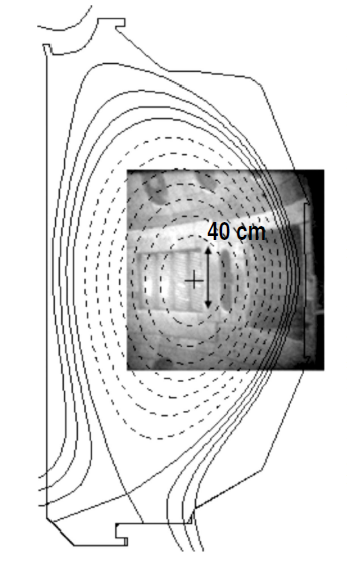
Tearing modes
Figure 3 shows the structure of a tearing mode, which is caused by a perturbation of either the plasma pressure or the helical electric current flowing in a tokamak. When this pertubation is located at so-called rational magnetic flux surfaces, i.e., where the helical magnetic field lines wrap around on themselves, magnetic fields can tear apart and reconnect to form a magnetic island. These structures degrade the performance of the tokamak, which is intended to have simple nested magnetic flux surfaces (as seen in Figure 2).
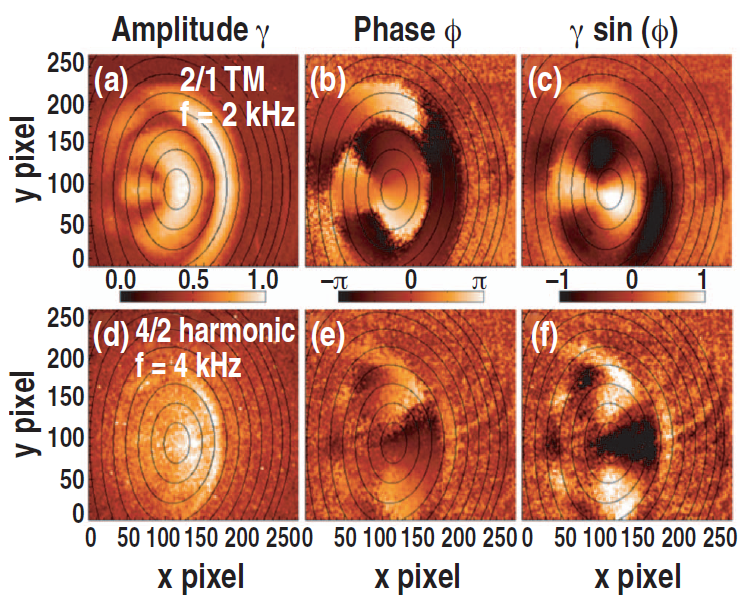
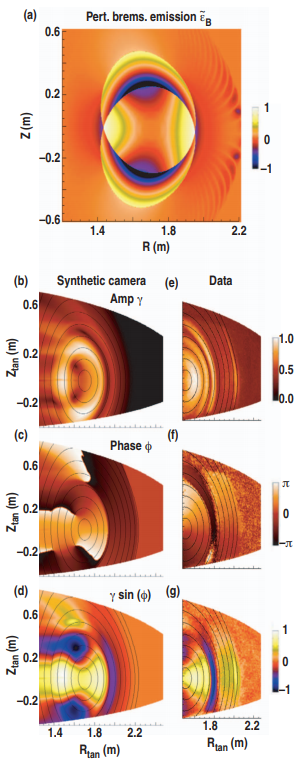
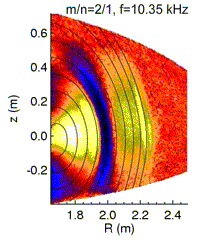
Sawtooth instability
Another plasma instability which I had the privilege of imaging for the first time ever is called a sawtooth crash. The sawtooth instability forms when the plasma current is peaked near the magnetic axis, causing plasma from the core to rapidly mix with the cooler outer regions. This is a bad thing, because the game in fusion is to keep a dense plasma extremely hot for as long as possible in order to produce a lot of fusion reactions. The mixing is very fast (about 100 microseconds). After the crash, the central temperature gradually rises as the current profile and fast ion population evolve, and the process repeats. The exact nature of the magnetic reconnection that occurs during the sawtooth crash has eluded a complete physics explanation, and fast imaging of these events may provide new insights through detailed comparison to theory. Magnetic reconnection is also a hot topic in the astrophysics community, because reconnection occurs during solar flares and coronal mass ejections. These magnetic storms can even interfere with power grids on Earth!
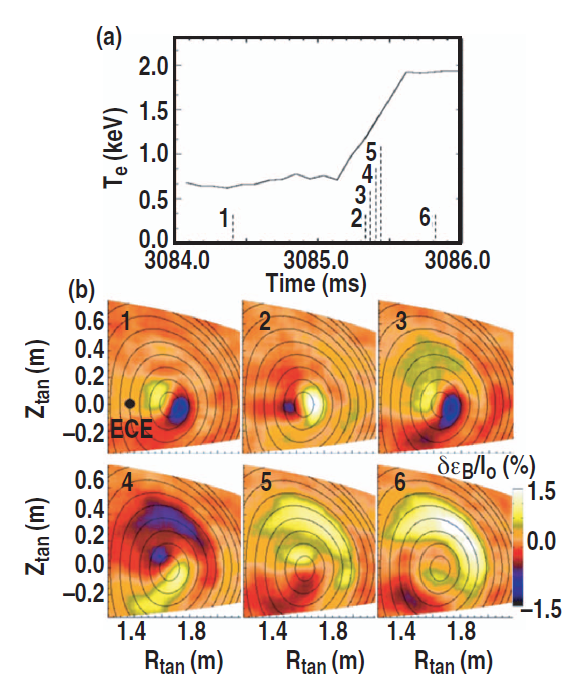
Check out my publications about this topic here , here , and here .